The rising sun glints off the metal struts as Superintendent Don Johnson slowly climbs a five-story stair tower, scanning every tread, bolt, and gap for unseen danger. He has done the same climb every morning for months before anyone else is allowed to use the stair tower, an external structure that allows personnel to enter the job site and hoist materials. Don’s attention to safety details made him ideal for this ongoing project, but he’s just one of dozens of HBW superintendents who actively bring safety into work processes.
Don and the other superintendents will have their moment in the spotlight this week as HBW observes Construction Safety Week. The firm plans to share lessons learned, best practices, and words of advice from their superintendents. Blogs, social posts, and site visits will capture these stories, but they will be familiar to any subcontractor or vendor who has worked with HBW. The company has prioritized safety since it was founded, holding itself to the highest standards.
Planning can keep a job site safer
Field Operations Manager Rande Naylor explains, “Safety at HBW is an everyday thing, not just a Safety Week thing. How we do it comes down to planning, accountability, and communication. So, during Safety Week, I’ll be in Gaithersburg at the Aldi grocery store we are building, showcasing the work of Superintendent George Raivel. George’s site has the potential for situations that OSHA might focus on, but he’s followed our processes to plan ahead, anticipating the risks and determining how best to avoid them. He holds his crew accountable for following safety protocols and training and has established excellent communication channels so everyone who steps on site understands what they need to be doing to stay safe. It’s a success story, for sure.”
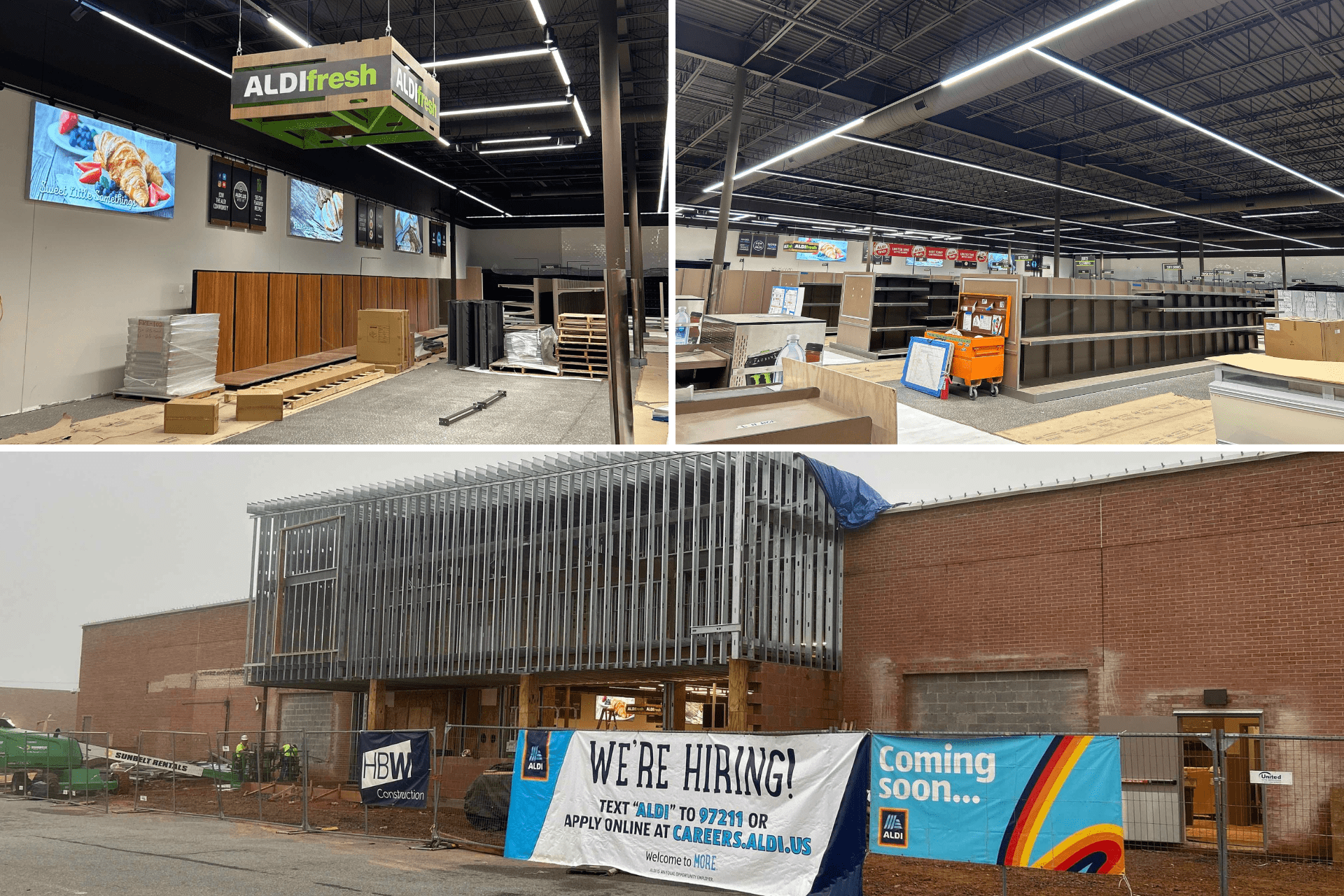
During the site visits, Rande will also recognize individuals on HBW’s many job sites who have followed safety protocols to the letter or gone the extra mile for safety.
As the firm brings plans to life, building stores and apartments and remodeling spaces for new tenants, planning ahead for safety has become second nature to HBW employees, but it’s always remained the first priority.
Allison Lambert, Construction Project Manager, starts thinking about safety before HBW even bids on a job. “We need to account for the time and steps it’s going to take to do each job correctly but also safely. PMs go out and do a site survey so we can even put together the estimate, and that’s when you start thinking about the safety aspects. You might think to yourself, OK, we’ll need an external stairwell, so that’s going to be covered in your bid because there are going to be extra safety costs associated with it. Once we get the job, we share all those things we’ve flagged with the superintendent. There’s a back-and-forth as we bounce ideas off of each other. We need all the eyes we can get on safety.”
Don Johnson agrees. “Some companies don’t think about the safety aspect until they’re already on the job and an issue comes up. Here, it’s the forethought that goes into it. It’s the planning from the get-go. It’s very proactive, not reactive.”
HBW’s brand of safety
With years of field experience and training, HBW counts on its superintendents to share what they know and set expectations for safe construction. Rande routinely sends superintendents to other job sites to learn about safety approaches or see how situations are being handled. “I tell them to soak up all the knowledge.”
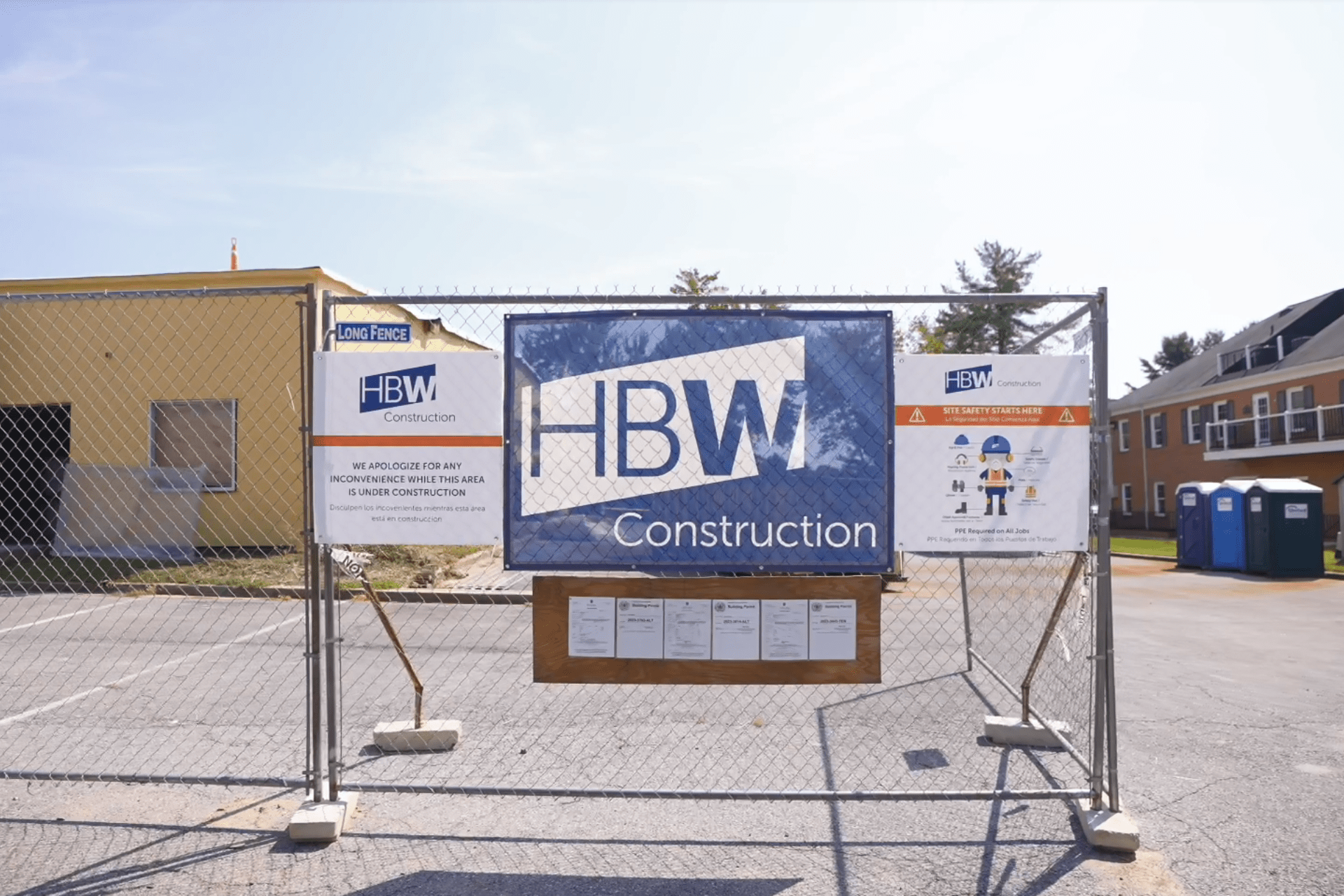
Yet superintendents aren’t the only ones in charge of occupational safety. At HBW, it’s a collaborative effort between project managers who come up with the plan, superintendents who implement the plan, and subcontractors who work on the plan. And for the hazards that crop up suddenly? Rande says, “We adjust on the spot, pulling in anyone with experience to gather ideas.”
HBW also uses a third-party safety company, Diversified. They add another set of eyes to projects that are big or particularly challenging. The firm counts on those outside experts to be super picky about safety and find things the HBW team might have missed. They also look for them to share situations and solutions that they’ve seen in other jobs.
Value Every Voice: The 2024 theme for Construction Safety Week
HBW is well aligned with this year’s Construction Safety Week theme, Value Every Voice, and its core tenets to Encourage, Listen, and Empower. Indeed, HBW is living out those values every day and on every job site.
“You want to talk to the laborers out sweeping the floor and the subs who are just there for a day. Everybody can have an idea or an opinion. We take all concerns about building site safety very seriously. For every off-hand comment, we’ll take the time to go check it out. They might just see something we’ve missed,” says Allison.
“Plus, we’ve found that if they’re part of identifying or solving safety issues, then they are more willing to adhere to the corrective steps and make the extra effort for safety,” adds Don.
Rande concludes, “At the end of the day, whether it is Construction Safety Week or week 5 on the job, we want everybody to go home the same way they came to the job site.”
Construction Safety Week is May 6-10, 2024.
HBW was perfectly positioned to capitalize on new opportunities in 2023. By continuing to build resources that allow us to excel in key market sectors and keeping our team focused on exceptional client service, HBW saw some notable successes in the marketplace and within our ranks.
Growing Market Sectors
Although the market for office space build-outs remained flat,HBW saw substantial growth in health sciences, medical construction, as well as retail and restaurants. These results shifted our focus for 2024.
Instead of a shotgun approach to pursuing new projects across all market sectors, we are now concentrating more on the market sectors with growth indicators.
We recognize that medical and restaurant/retail builds are on a growth trajectory for our region; the work is there. Conveniently, HBW has a strong resume and lots of recent experience, making us a prime candidate for additional projects. This doesn’t mean we’re becoming a niche firm; it simply means we have enough experience and expertise to meet changing market needs.
Service and Maintenance
Speaking of meeting market needs, HBW’s Service Division is poised for growth with a new name and new leadership. Previously, this arm of the business was separate from our construction services. Now, we’ll better leverage the knowledge and skills of our construction team to provide the maintenance and lifespan services that every business needs. Under John Woolrich, the Service Division is ready to continue helping our clients enjoy the benefits of efficient and well-maintained spaces.
New Talent. New Roles.
As a company, we’ve strategically added some new team members, expanding our capabilities. You’ll notice new faces in project management and project coordination, sales, and superintendents. With careful planning and strategic growth, we never felt like we were scrambling to hire; we could move deliberately and identify top talent who fit our culture and share our work ethic.
A Strong Sense of Culture
Recognizing and rewarding our employees is important at HBW. We ask everyone to go above and beyond for our clients. To show our appreciation, we changed up our staff interactions this year.
We replaced two big events with multiple, smaller events that allowed for more engagement. Our outings included dinners, axe-throwing, Top Golf, fishing, shooting, and more. Employees also volunteered for community outreach events, including exterior improvements to Stepping Stones, a nonprofit near the office, and seasonal clean-ups at Montgomery Parks. These activities support HBW team building and strengthen our connection to the communities where we work.
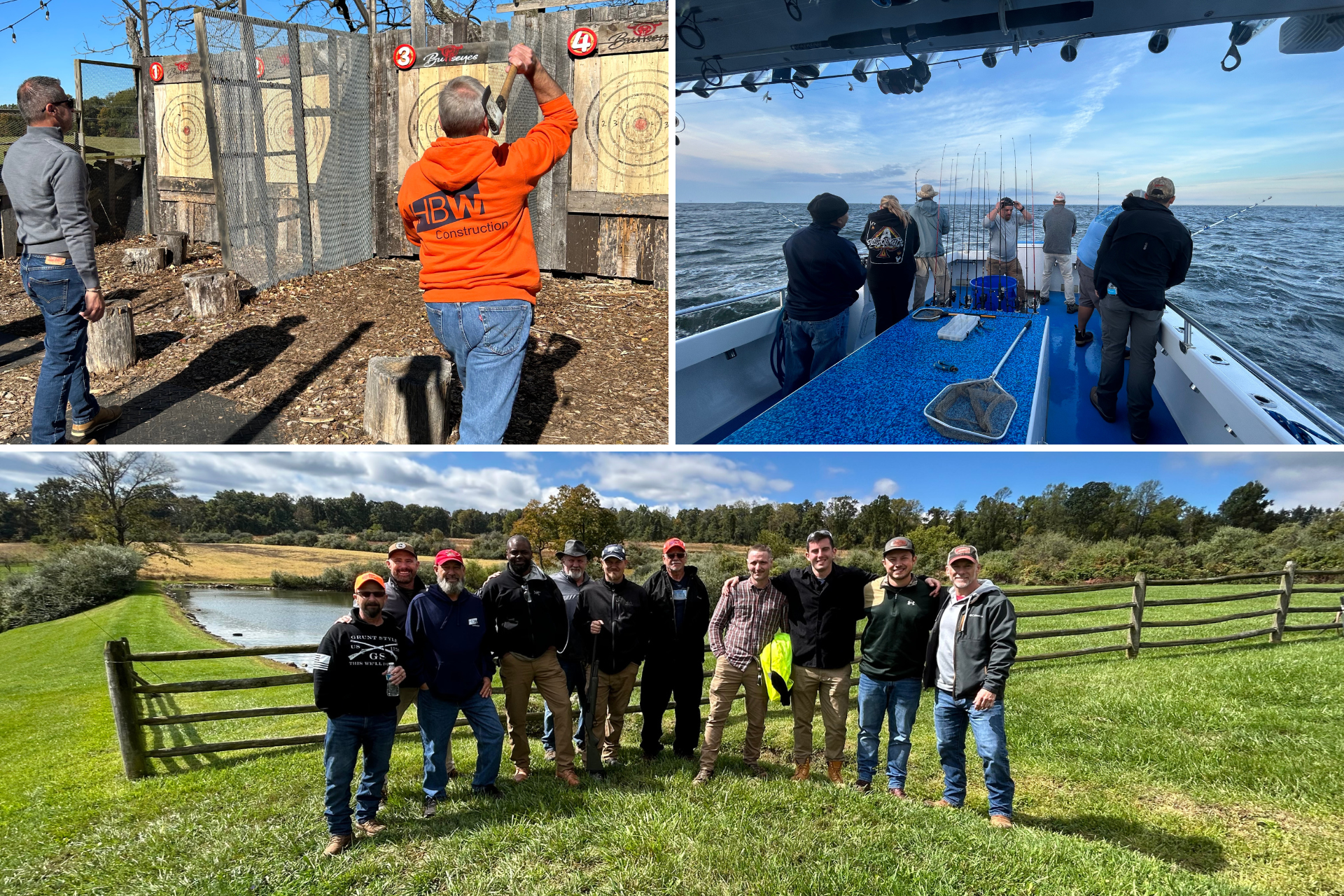
Standout Projects
No yearly round-up would be complete without some HBW project highlights.
First up is our base build on 1525 Marion Barry Ave. It’s an exciting project that we can lean into. HBW hasn’t done a base building in years, but our team was more than up to the challenge with their combined experience and careful planning. And base buildings represent another growing market for HBW.

One of the most unique projects of the year is 1333 H Street, Washington DC. It had an atrium in the building on the 10th & 11th floors that we infilled. It required pulling a window to crane in steel and to pump in concrete. That isn’t something that happens every day, which made it exciting.

Our builds for Inova Hospital Center, and Apex Vet solidified our place in the medical sector, while a new win for an Aldi in Gaithersburg will kick off our retail work for 2024.
New Year Plans
Looking ahead to 2024 is a mixed bag. We don’t predict any major change in the market in the next six months, but we also don’t think we’ll see any dramatic upswings in construction. DC is still very vacant, and it will be a slower market until more people return to work there. That doesn’t mean all is quiet, however. The outskirts and suburbs in Northern Virginia and Maryland are definitely expanding. HBW will go where the action is, bringing our timeless focus on quality construction and exceeding customer expectations.
Although the majority of businesses have returned to the way things were before, the nature of business has changed. Organizations of all sizes are giving more priority to the employee experience. And that starts with the work environment.
If you have commercial office space, now is the time to make an investment so it works harder for you – and your tenants. Let’s look at the trends and how HBW Construction is helping meet the market’s changing needs.
Commercial real estate trends
As recently as a few months ago, companies were willing to eat the cost of underutilized or even empty office space because the labor market was so tight. They used working from home as a benefit to recruit and retain talent. Now, those companies are using a different strategy: luring employees back to the office with more comfortable, flexible workspaces and amenities.
In Washington, DC, we’ve noticed that most of the Class A buildings (the nicest spaces) are fully occupied, while older, more tired buildings stand empty. The commercial real estate market has noticed, too. Revamped office spaces feel like high-end hotel lobbies or Starbucks shops, with more casual or collaborative spaces and fewer cubicles or offices.

Companies that want employees to come to the office have to make it attractive again so people want to be there and those at work can be productive. The response from commercial real estate owners and managers includes new building facades and entrances, grand lobbies, brighter corridors, roof decks, fitness centers, and large conference centers. Adding shared amenities helps to compete with Class A buildings.
Shared facilities meet tenants’ needs, too, where we’re seeing a downsizing trend. As companies renew their lease, they are giving space back or looking to move to commercial office space that works better for the business. The emphasis is on understanding how the space is going to be used and creating purpose-built interiors.
The thought behind the investment
As a leader in commercial office construction and customization, HBW understands the new dynamics of commercial real estate. Flexibility attracts tenants, while appearance and features attract employees.
We’re seeing tenants spending more time working with designers on programming their office space. Together, they determine who’s coming in, who’s staying at home, how the work is going to flow, what people will be doing, and what tools or space they need for those tasks – all before designing the space that HBW then builds out.

We’re also seeing Landlords building more spec office spaces to speed up the lease process. By doing the build-out process themselves, offices are move-in ready; some are even turnkey and include all furnishings. These spaces aren’t a blank slate; often, they are trendy, high-tech-looking spaces with shared kitchens and conference rooms on each floor.
What’s in – and what’s OUT
When it comes to upgrading office space, it’s out with the old and in with the new.
We’re seeing commercial real estate say goodbye to:
- Plain office interiors
- Communal shared desktops
- Spaces dense with private offices
- Assigned work spaces
- Office space in the city
And in their place, we’re building out:
- Hoteling spaces, where employees can reserve workspace depending on the type of tasks they need to do that day
- Open-concept coworking environments with a mix of sofas, chairs, and tables
- Soundproof booths or rooms for private phone calls or conversation
- Modular furniture that can be easily reconfigured
- Office space in new, trendy mixed use developments in the suburbs
- Large rooms that can be divided with operable partitions to accommodate large and small gatherings

These commercial investments are just that – money spent for a future payoff. Five years ago, $50 – $60 a square foot in construction cost for an office was high-end. Today, we’re seeing landlords spending $110 – $160 a square foot on spec suites that include accent walls, linear lighting, glass wall systems, and other “homey” features that appeal to tenants and employees.
Changing space, changing roles
Here at HBW, we’ve stayed on-trend with our own space. We’ve downsized, consolidating two office spaces into one for better collaboration. When we’re not busy tearing down walls and installing modern amenities, we are spending more time on pre-lease consulting for our customers.
Since design and function are so important, customers considering multiple buildings for their new office space need to know that the “bones” are suitable to do the kind of things they want with their build-out. Our expertise and construction knowledge help them select the right space and understand the costs involved to realize their vision for the space.
When it comes to office space, the mindset now is: If you’re going to have it, make sure it works for you. HBW remains ready to help owners and property managers with their changing needs as they invest in next-gen office space.
To see how HBW Construction can make it “work for you,” visit our Corporate Interiors portfolio on our website.
When we were planning for 2023, we forecasted some market changes and did some strategic planning to help HBW succeed. We recognized that although these situations were out of our control, how we reacted would make a difference. At the mid-year point, we’re right where we need to be and confident that HBW has recovered financially from the pandemic.
The industry, and the economy, throw curve balls regularly, so planning ahead has never been more important. Instead of setting annual goals and working on them for months, we’re lucky if we can set quarterly goals before there’s another major shift. As we look toward the back half of the year, here are the trends we’re watching.
Trend: Lingering uncertainty around the future of office work
We expected that office interior work would continue to decline as companies vacillate on whether to return to work in offices and, if they do, how does that look. That was an important heads-up because it gave us a chance to expand into other sectors, replacing the dollar volume of interior renovations on our books.
Trend: Supply chain woes
Advanced planning for all of our jobs is more critical than ever as supply chain issues continue to impact delivery times. For clients who don’t have insight into these disruptions, we adjust our timelines so the right products are on the job site at the right time. Even once the global economy recovers and the labor shortage eases, our planning process will continue to be a competitive advantage.
Trend: Finding the right talent
The labor crunch is hitting our market, too, and daily we hear from subs that are struggling to find the right employees. To keep positions at HBW filled, we stay attuned to what candidates want and how to provide a comfortable environment for work. Our focus on company culture has continued to pay off; we have an engaged and talented staff!
Speaking of talent, we believe that success in construction doesn’t have to start with a certain degree of training or experience. The industry requires the right kind of person: smart, motivated, and willing to learn. This is why we are lucky enough to be able to promote from within, including Angel Colon, who recently moved from Senior Estimator to Assistant Vice President of Estimating this spring.
Trend: Retrofitting vs. Rebuilding
This trend is big in our market. Many property owners have no choice but to renovate because they have a lot of inventory and little demand. They are getting creative with how they reposition their real estate. In a recent Howard Hughes project, we updated seven buildings. These weren’t gut jobs but they did upgrade lobbies and create amenity centers that would be attractive to employers and employees, incentivizing them to return to the office. Some of the spaces were turned into collaboration rooms while others featured full gyms, golf zones, pool tables, and other perks.
The DC market is flooded with office buildings and there’s a major trend to convert them to multifamily, completely shifting entire buildings out of the office market. That change means we’ll see an increase in businesses that serve residential needs, and HBW is ready.
Trend: More retail and restaurants
Retail and restaurant construction is booming for HBW. It’s not just chains and franchises, we’re also seeing small, independently owned places reaching out for their builds. Anytime we can help create communities, the work is especially rewarding.
Trend: More medical and life science
Medical life science is the sector that is exceeding our projections. Look for us to continue leaning into and hiring specialists with medical construction experience so we can continue to grow our knowledge base and client list.
Trend: More four-legged friends
We have seen a huge uptick in pet-related build-outs, including vet hospitals, offices, grooming facilities, pet resorts, daycares, and parks. All the pets that provided companionship through the pandemic are driving an increase in animal-related services. HBW has completed five Playful Pack Pet facilities and is wrapping up Apex Vets. This 21,000 SF, 24-hour emergency veterinarian hospital in Wheaton, MD is the only privately owned pet hospital in the area. The work taps our medical construction expertise for specialty surgical and treatment rooms as well as comfortable spaces for doctors, staff, and owners.
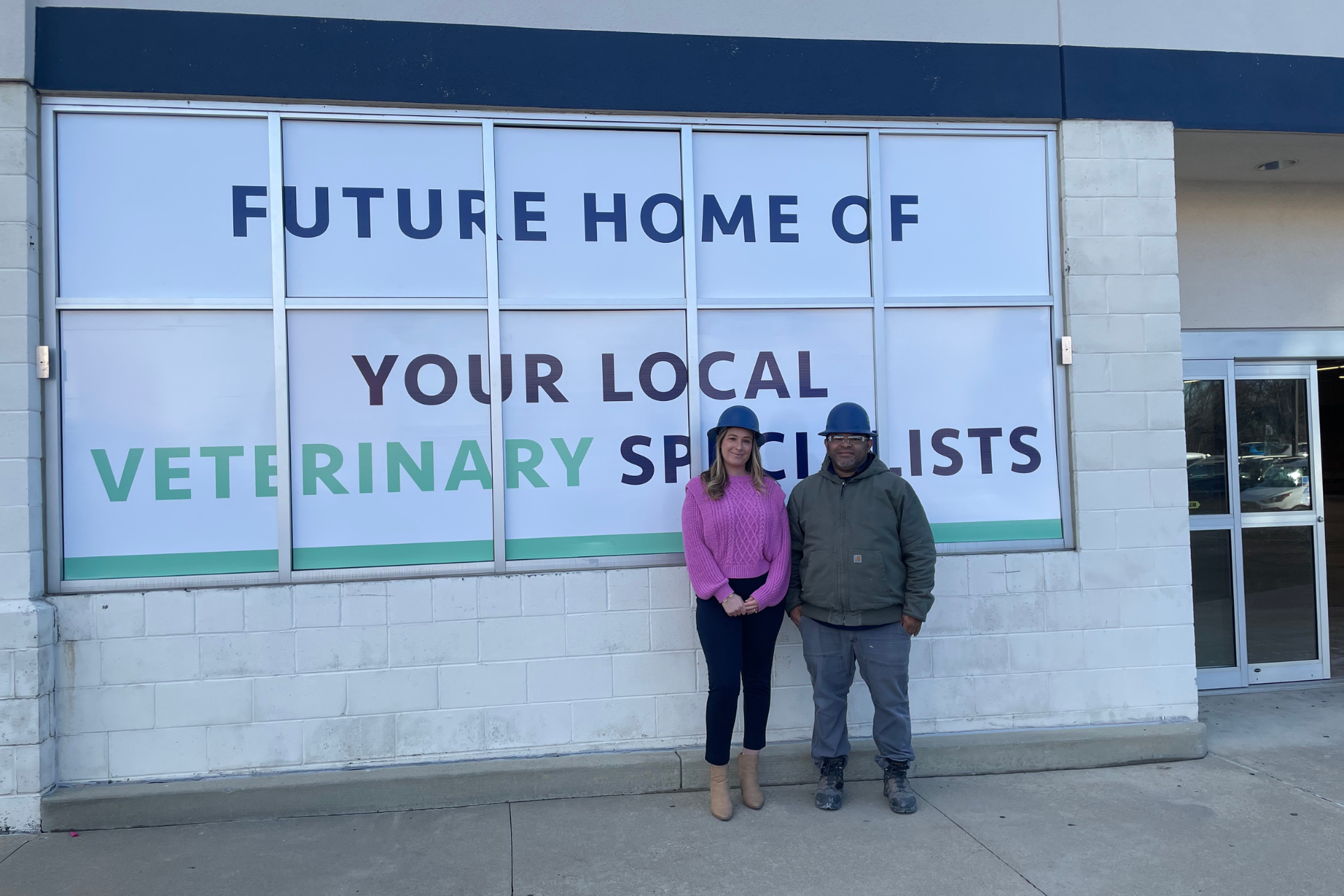
One thing that’s not trendy is repeat business. We consistently deliver the kind of service that keeps clients coming back. Our focus on building relationships and exceptional communication provides the kind of service that’s tough to beat in this area, and impossible to leave. We projected – and have seen – that the majority of our work is repeat business and referrals.
We used to think that the pandemic represented the biggest changes we would ever experience in our business, but 2023 has shown us that things are continuing to change – fast. Our ability to adjust and move on is a source of strength for HBW employees and clients. Look for more of the same for the rest of the year and beyond as HBW grows.
To learn more about our sectors and recent projects, visit our Market Sectors page on our website. For those interested in joining HBW Construction, visit Careers.
Four Steps to Better Estimating
If the architect and general contractor follow a detailed budget request form (and the design team refers to it during client consultations), it will dramatically improve budgeting. In a nutshell, here are four budgeting considerations that will help your commercial building cost estimator improve budget accuracy.
1. Occupied vs unoccupied
This consideration seems simple, but post-pandemic it requires additional thought. In the past, contractors could pull up an address and determine if a building was tenant occupied, but some clients now have hybrid or remote arrangements that can support construction in an unoccupied space.
Note: Unoccupied spaces are less labor intensive and therefore less expensive than spaces for which contractors will have to accommodate tenant needs. This distinction factors into your budgeting.
2. Floors to ceilings
Choices of flooring, walls, doors, and ceilings offer a variety of options that can rack up budget estimates. A painted grade door will be less expensive than a stain grade or glass door. Carpet is less expensive than tile. An open ceiling will require additional estimates compared to an enclosed ceiling.
It also helps to know if materials from demolition will be retained and/or relocated (e.g. cabinetry, windows, railings, doors) to factor in some cost savings.
For commercial spaces that will be leased, your estimator will want to know “usable” square footage per unit as well as “rentable” square footage to show those cost differences in the estimate.
Note: Include design intent notes within the budget request for any known client preferences for floor, wall, door and ceiling choices. Include usable and rentable square footage as applicable
3. Special finishes
Finishes may change during a project due to client preferences or sourcing issues, but a general idea of mid-range to high-end finishes can support more accurate estimating. Different paint colors don’t matter as much as the choice and number of lighting fixtures or a specific metal or stone finish.
If you know that certain materials require extra lead time, suggest alternative materials as part of the estimating process. This extra effort will manage future expectations between design and construction teams as well as the client.
Note: Contingency rates of 5-15% are added to overall budget estimates for any volatility in labor or materials costs. Projects with a longer future start date, for example, can experience these wage or price increases.
4. Special uses and requirements
Different industries have special uses or requirements that can add to the costs of construction. Some examples include:
- HVAC requirements for extra cooling or heating
- Acoustical or sound proofing requirements
- Clean room and lab requirements
- High electrical loads or plumbing capacity
Questions about these needs can help the client and commercial building cost estimator anticipate additional costs based on industry standards of functionality or safety.
Note: Facilities with evening uses such as training rooms or overnight medical care may need additional heating or cooling outside of standard hours. Make note of special tenant uses after 6 p.m. when the base building would automatically adjust temperature controls.
There are many more budget tips that support accurate cost estimating. My key point is that accurate estimating helps architects close deals and keep their clients happy. Everybody wins in that scenario. If you have questions about HBW’s commercial construction services, including our detailed budget request form, contact us.
We also offer a popular AIA-certified Budgeting 101 class. Learn more.
Well, that time is now.
In 2022, HBW Construction adopted a 3D schematic and virtual tour software platform. With Matterport, our team can go on site and collect video and photography during all phases of construction. We can use the technology for a variety of communications.
When projects run into constructability issues, our superintendents can use these high-quality tools to communicate with the architect or engineering teams. By viewing the real-time virtual space rather than responding to a standard RFI, design or engineering professionals can devise alternatives faster or get a jump on redesigns and new blueprint approvals. Factoring in travel scheduling and team collaboration, the same solutions without 3D video or 4K images could take several days or even weeks.
But there’s more. Subcontractors can plan better for site conditions and equipment needs. They can “see” ceiling heights, the amount of natural light and access points (or measure the width of doors and hallways) in the virtual environment before getting onsite. This helps our subcontractors proactively communicate with scheduled crews. Scope of work changes can be priced much faster by eliminating physical site visits.
Primary benefits of this solution can include:
- Instant site access for remote team members
- Decreased project travel expense
- Complete capture of all site conditions
- More efficient construction project schedule
- Ability to zoom in to the smallest details in seconds
- More effective communications for the entire project team
Do 3D Tours Enhance Owner Satisfaction?
These days, project partners and owners may all be located in different cities. Physical distance used to make progress updates, troubleshooting and approvals more complex. With 4K images and 360° virtual tours, owners can see the same environment as their project team at any phase of the project. This option supports effective and timely communication.
When they can zoom in and out or virtually measure a space, they can more quickly assess and respond to solutions offered by the project team — which keeps the project moving forward.
We use these tools according to the preferences of our customers and project partners. Owners or designers still want to visit the site in person and experience the space with all of their senses. And sometimes engineers have to be on site for complex reengineering. Inspections and final walk-throughs are still conducted in person, too.
However, this technology does create efficiencies in the construction project schedule. Real-time images also support quality control and owner satisfaction throughout the project.
If there is a way to do something better through new technologies, we are open to trying it and enhancing HBW Construction’s toolkit. To learn more about our approach to job site management and construction management, see our services.
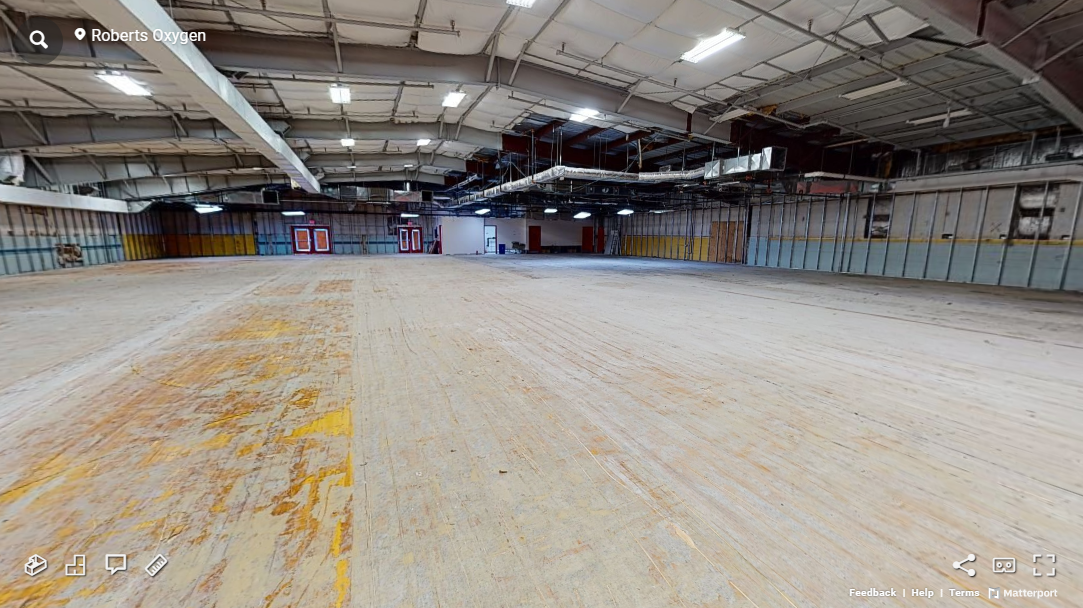

Some companies that planned to expand office space prior to the pandemic have pulled back to rethink their spaces. Flexible warehouse spaces offer customizable approaches to hybrid office spaces, data centers and special event and training spaces while naturally providing ample delivery access, parking and storage.
If your business is seeking warehouse flex-space, or already has a warehouse space that needs remodeling, working with the right broker, contractor and commercial construction services group is important. You need to understand:
- Options to lease, buy or build;
- Designs that optimize your space, and
- Budgets, trades team experience and potential timelines
HBW Construction has built new warehouse space for decades, and our commercial construction services group is uniquely qualified to remodel, upgrade or adapt these spaces for many business types. We have recently adapted warehouse flex-space for retail breweries and restaurants, pet grooming/training businesses, auto repair and HVAC companies, medical product manufacturing, real estate showrooms and professional services groups.
Rather than having one owner or lessee, some warehouse developers and owners accommodate several short- or long-term tenants. For example, the space can be designed into several units for short-term leasing or modeled like an association with purchased units. Short-term leasing provides flexibility for businesses that will go back to traditional office space in the future. The long-term option is an investment that each unit owner can depreciate for tax purposes and sell in the future, similar to a condo.
Almost any business type can consider warehouse flex-spaces. Buildouts can rival the nicest offices/lab spaces. They can also remain open concept and rugged with high ceilings and the advantage of flexible indoor/outdoor spaces. For one project, we installed an indoor pool! For another client, we built an apartment inside the warehouse to serve as a real estate showroom.
[rl_gallery id=”7671″]
Consider Your Budget and Quality Control
One of the first discussions we have with clients is about their project goals. This helps us develop a preliminary budget so that clients can assess and anticipate their priorities for the warehouse flex-space.
For example, a client may want a large overhead door that accommodates an indoor/outdoor space. That design choice can impact HVAC or insulation budgets depending on the climate. Another client may need specialized lab space subject to certain regulations or safety systems, the cost of which must be factored into the estimated budget. As with any new construction or remodeling project, budgets can range widely in warehouse flex-space.
By using an experienced commercial construction services group, however, you can achieve efficiency through the construction project schedule. HBW has a full team of experienced tradespeople including master carpenters, electricians, plumbers, painters, finishers, etc., who work together regularly. Their long working relationships also support quality control on your project.
If you have any questions about identifying warehouse flex sites, we can refer you to trusted brokers or management companies. For your warehouse flex-space goals and budgeting for projects in the Northeast (DMV) region, contact us for a conversation.
Learn more about HBW’s quality control and safety practices.
A discussion during the pre-construction process can help your project team determine owner preferences beyond certification standards or jurisdiction requirements. HBW trains our field team to prioritize recycling, upcycling or materials re-use. Our creative solutions in the field result in stronger client relationships. Besides the environmental benefits, recycling and repurposing can reduce project expenses and keep the construction project schedule on track.
Careful use of job site materials reduces waste and landfill fees. It can also sometimes result in creative design or engineering solutions for the project. We keep these factors in mind prior to demolition and during construction.
Job Site Recycling Ideas
Based on energy-efficiency standards in many major cities, some materials within existing buildings need to be replaced and disposed of properly, such as fluorescent light bulbs. However, the old metal lighting ballasts can usually be recycled. You can separate this type of metal and other metals from general construction debris for recycling.
The same can be considered for wood millwork and certain types of glass or stone. There are companies that will take some construction debris to recycle or develop new composite products, which diverts tons of material from the landfill. These options can also reduce a project’s waste disposal costs.
Job Site Repurposing Examples
During remodeling projects, there are often opportunities to repurpose or re-use materials. Each project and jurisdiction is unique, but we have often found ways to repurpose materials that range from millwork and doors to carpeting, glass panels and ceiling tiles.
When appropriate to the architectural design, engineering specs and building codes, repurposing or upcycling can save clients a lot of money on materials costs. When materials are discontinued or supply chains are uncertain, the benefits multiply!
- On a recent job, our approved repurposing of several glass doors saved the client thousands of dollars and kept the project on schedule for inspections.
- On another job, we used a set of existing lower cabinets from a remodeled space to refashion supply closet millwork. This particular millwork was discontinued; rather than tearing it out and replacing it, we suggested this successful alternative to repurpose on-site materials.
- We have obtained client approval to preserve materials from remodeling projects such as quality doors, ceiling tiles or light fixtures. Stored in our warehouse, these materials are “in stock,” for temporary or permanent solutions on other projects, which help maintain the construction project schedule.
[rl_gallery id=”7639″]
The question we always ask is, “Can we use this in some other way?” For example, residential or office buildings may have mechanical components that are still up to code and are difficult to find or costly to replace. We can preserve these components for an owner or tenant management company to support future building repairs. Training our team to think about current and future needs of the client can reduce project waste.
Rather than tossing it in the dumpster, we have also found new homes for items such as lightly used office furniture, fixtures and computer monitors. HBW field personnel stay in touch with each other across projects to brainstorm ways to repurpose or donate items.
When the construction team can use their creativity and ingenuity to work in partnership with the architectural and engineering team, it benefits the client and the environment. It also makes the team feel good about how they contribute to a successful project beyond the building process.
Recycling and re-use aren’t always possible, but you don’t know unless you try. When in doubt, don’t just toss it out. Discuss options with the client and project team early and often.
Learn more about HBW’s quality control and safety practices.
It’s not always possible to empty a building for construction. Health care facilities and hospitals and multi-tenant buildings can’t shut down completely. Offices and retail customers must also be provided access for tenants to conduct business.
Here are three essential tips to prepare for an occupied project, and what you should expect from your commercial construction services partner.
1. Confirm Expectations Before the Project Starts
Share your goals for project completion. For example, if the main goal is minimal disruption to building activities, then small sections can be blocked off and finished before moving to the next section of the space. Crews could also work on weekends or evenings when fewer people are around.
If the main goal is speed and efficiency, however, these approaches may not be a good fit due to the additional time and money required.
The building type and its users bring additional considerations. Some buildings such as health care facilities have specific safety, staff mobility, air quality and infectious disease control standards that crews must comply with during construction. An office building may have users who need quiet spaces and technology available for meetings. A residential facility requires planning for unit accessibility, safe entrance and exit routes, and control of noise and air quality. These are just a few expectations that must be discussed before work begins.
By confirming the needs and expectations of all potential occupants, the commercial construction services team can develop the project schedule and processes that promote good client satisfaction throughout the project.
2. Maintain Consistent Communication
One of the main ways to manage expectations is the communications process. Besides communicating on expectations before the project starts, it’s a best practice to designate one point of contact between the construction firm and the client. One point of contact supports efficient sharing of information while allowing crews to continue their work.
For example, the client may choose a consultant or a building administrator as the main point of contact. The construction team lead can communicate with this client representative, and that representative will be the main point of contact for building management/owner and tenants. This “one point of contact” approach keeps the crew on task and gives occupants clarity about who to contact for their questions or concerns.
Once work begins, we want to keep crews on site making progress without interruption. Weekly progress meetings with the client representative will communicate possible schedule changes and potential solutions to unexpected challenges. If delays or the unexpected happens, then the client and tenants are kept in the loop as necessary.
3. Expand Safety Protocols
Safety is our first priority when working in occupied spaces. We have already mentioned industry standards that must be followed for the building type and the construction industry overall. Construction crews now have an additional layer of protocols to follow with the COVID pandemic. Our firm was one of the first to initiate tracing processes to successfully manage crew and occupant safety.
In addition, we maintain clear and updated signage as construction occurs around the site. When new barriers are erected or crews need to close down or relocate building functions, proper signage and communication can keep indoor traffic flowing smoothly and safely. This includes signage for multiple languages.
You can rely on these strategies at HBW. We keep an open mind about the expectations and various approaches to occupied spaces. During planning, we can build scenarios and discuss costs associated with different approaches to your project.
Call us to talk about your upcoming commercial construction project.
Learn more about HBW’s project expertise.